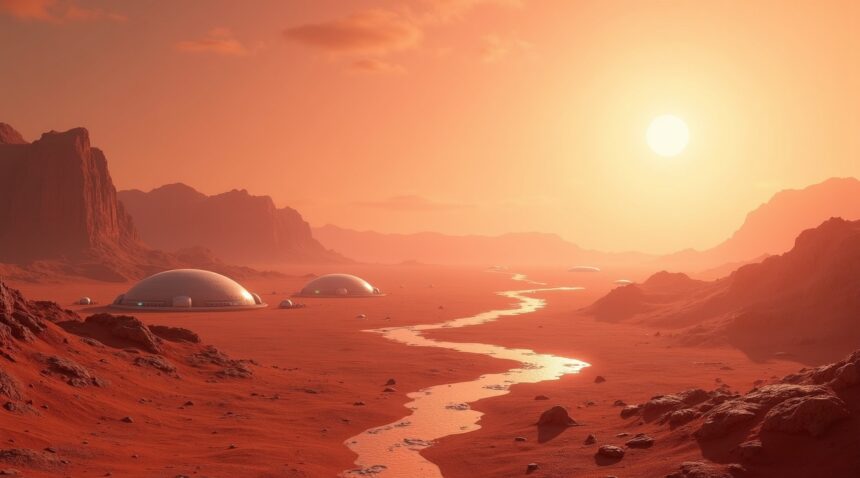Scientists have developed a comprehensive three-phase plan to terraform Mars using locally sourced materials and engineered organisms, potentially raising the planet’s temperature by 50 degrees Fahrenheit within decades.
Key Takeaways
- The terraforming strategy utilizes Martian resources including engineered dust particles, ultralight silica aerogel tiles, and solar sails to create greenhouse effects and raise surface temperatures by 30°C
- The three-phase plan progresses from abiotic warming through engineered extremophile microbes that metabolize toxic perchlorates to eventual introduction of plants and complex organisms
- Mars’ current atmosphere of 95% CO₂ provides an excellent foundation for greenhouse warming once sufficient thermal energy becomes available through the proposed interventions
- Major obstacles remain including Mars’ lack of magnetic field protection, toxic soil containing perchlorates, reduced gravity effects on human health, and insufficient accessible CO₂ for complete atmospheric transformation
- Post-terraforming economic projections suggest Martian real estate could be valued at over $36 trillion, though dome-based communities at $1 million per 100-meter habitat represent more realistic near-term investment opportunities
Terraforming Mars Through Resource Optimization
The scientific community has reached a pivotal moment in planetary engineering. Researchers now present a viable pathway for transforming Mars into a habitable world through strategic manipulation of its existing resources. This breakthrough represents decades of collaborative research across multiple disciplines.
The proposed approach leverages Mars’ abundant carbon dioxide atmosphere. Current atmospheric composition provides the perfect foundation for greenhouse warming effects. Scientists plan to amplify these natural processes through targeted interventions.
Phase One: Increasing Surface Temperature
Phase one focuses on warming the planet through engineered particles and reflective materials. Engineers will deploy microscopic dust particles designed to absorb and trap solar radiation. These particles will work alongside ultralight silica aerogel tiles positioned at strategic locations across the Martian surface.
Solar sails will complement these ground-based systems. Large reflective arrays will redirect additional sunlight toward the planet’s surface. This coordinated approach could raise global temperatures by 30°C within several decades.
Phase Two: Biological Intervention Using Engineered Microbes
Phase two introduces specially engineered microorganisms. These extremophile bacteria will consume toxic perchlorates present in Martian soil. This biological phase serves dual purposes: detoxifying the environment while producing oxygen as a metabolic byproduct.
Scientists have already identified candidate organisms for genetic modification. These hardy microbes thrive in extreme conditions similar to Mars’ current environment. Genetic engineering will enhance their ability to process perchlorates while increasing their reproductive rates.
Phase Three: Establishing Advanced Ecosystems
Phase three brings plant life and more complex organisms to the transformed landscape. Hardy vegetation will establish root systems in the now-detoxified soil. These plants will contribute to atmospheric oxygen production while creating the foundation for more complex ecosystems.
Favorable Atmospheric Factors
Mars’ existing atmospheric composition strongly favors this approach. The planet’s 95% carbon dioxide atmosphere provides excellent raw material for greenhouse effects. Current atmospheric pressure, while low, contains sufficient gas for significant warming once proper thermal management systems activate.
Challenges to Mars Terraforming
- Lack of magnetic field: Mars lacks the magnetic field protection that shields Earth from harmful solar radiation. This fundamental issue requires technological solutions or underground habitation systems.
- Perchlorate contamination: These toxic compounds saturate Martian soil and pose serious health risks to any terrestrial life forms. The engineered microorganisms must successfully neutralize these chemicals before complex life can establish itself.
- Reduced gravity: Long-term exposure to 38% of Earth’s gravity may cause bone density loss and cardiovascular issues. Medical advancements or artificial gravity systems might be required.
- CO₂ accessibility: While Mars contains substantial carbon dioxide, much of it remains locked in polar ice caps and underground deposits. Unlocking these reserves will require large-scale infrastructure investment.
Economic Outlook and Near-Term Prospects
Economic projections for terraformed Mars paint an intriguing picture. Real estate valuations could exceed $36 trillion once the planet becomes habitable. These estimates assume successful completion of all terraforming phases and establishment of permanent human settlements.
NASA and other space agencies suggest dome-based communities offer more immediate investment opportunities. Enclosed habitats costing approximately $1 million per 100-meter structure could support small populations during the transformation process. These facilities would provide controlled environments while the broader terraforming project progresses.
Long-Term Vision and Sustainability
The timeline spans several centuries for complete transformation. Initial warming effects could begin within decades, but establishing sustainable ecosystems will require generational commitment. Each phase builds upon previous achievements while addressing newly emerged challenges.
International cooperation will prove essential for this undertaking. No single nation possesses the resources or expertise to complete such an ambitious project independently. Collaborative efforts across scientific disciplines and national boundaries will determine success.
Technological Enablers and Monitoring
Technological developments continue advancing the feasibility of Martian terraforming. Advances in genetic engineering, materials science, and space technology bring these concepts closer to reality. Each breakthrough reduces costs and implementation complexity.
The three-phase approach provides a structured pathway forward. Rather than attempting simultaneous changes across all systems, this methodology allows for careful monitoring and adjustment at each stage. Success in early phases will inform and improve later interventions.
Risk assessment remains ongoing as scientists refine their models. Computer simulations test various scenarios and contingencies. These studies help identify potential failure points and develop backup strategies.
Environmental monitoring systems will track progress throughout the transformation. Atmospheric sensors, soil analysis equipment, and biological monitoring stations will provide real-time data on changing conditions. This information will guide adjustments to the terraforming protocols.
A Bold Step Toward Human Expansion
Mars terraforming represents humanity’s most ambitious planetary engineering project. Success would establish our species as a truly spacefaring civilization. The economic, scientific, and cultural implications extend far beyond the Red Planet itself.
Revolutionary Method Could Warm Mars by 50 Degrees in Decades
Scientists have developed an ambitious climate engineering approach that could dramatically transform Mars’ hostile environment using locally sourced materials. The breakthrough strategy centers on deploying engineered dust particles, ultralight silica aerogel tiles, and solar sails across the Martian surface to raise temperatures by 30°C—approximately 50°F.
Mars presents formidable challenges for human habitation, with an average surface temperature hovering near -70°C and an atmosphere barely 0.6% the density of Earth’s. The planet receives only 130 W/m² of solar irradiance compared to Earth’s 340 W/m², making thermal regulation a critical hurdle for any terraforming effort. These harsh conditions have long made Mars colonization seem like science fiction rather than achievable reality.
Efficiency Through Local Resource Utilization
The proposed methods offer remarkable efficiency gains by utilizing in situ Martian resources rather than importing materials from Earth. Recent research demonstrates that these innovative approaches may be up to 5,000 times more efficient than previous terraforming concepts that relied on transported materials. The strategy involves several key components:
- Engineered atmospheric dust particles that enhance heat retention
- Ultralight silica aerogel tiles strategically placed across surface areas
- Solar sails positioned to optimize solar radiation capture
- Systems designed to trigger subsurface ice melting
The primary objective focuses on creating a self-sustaining greenhouse effect once the initial temperature threshold is reached. Mars’ atmosphere, composed of 95% CO₂, provides an excellent foundation for greenhouse warming once sufficient thermal energy becomes available. Scientists believe that melting subsurface ice could release additional water vapor and carbon dioxide, amplifying the warming effect through natural feedback loops.
This climate engineering approach represents a significant departure from earlier terraforming proposals that required massive infrastructure investments and material transportation from Earth. By leveraging Mars’ existing atmospheric composition and surface materials, the plan offers a more practical pathway forward. The silica aerogel technology, in particular, provides exceptional insulation properties while remaining lightweight enough for large-scale deployment.
The timeline for implementation spans several decades, with initial phases focusing on establishing manufacturing capabilities for aerogel production directly on Mars. Space exploration advances continue making such ambitious projects increasingly feasible. Success would create conditions suitable for liquid water on the surface, fundamentally altering Mars’ habitability prospects and potentially supporting life-supporting environments similar to those found elsewhere in our solar system.
Three-Phase Plan: From Microbes to Breathable Atmosphere
Scientists have crafted an ambitious three-phase approach to transform Mars into a habitable world, spanning centuries or potentially millennia. This systematic plan represents the most comprehensive strategy yet proposed for planetary engineering on such a massive scale.
Phase 1: Abiotic Preconditioning Sets the Foundation
The initial phase focuses entirely on raising Mars’ surface temperatures through advanced technological interventions. Engineers would deploy solar sails, dispersed nanoparticles, and ultralight aerogel tiles across the planet over several decades. These materials would work together to trap solar radiation and create greenhouse effects, gradually warming the frigid Martian surface. This temperature increase becomes essential for supporting life in subsequent phases.
Phase 2: Bioengineering Begins Changing the Planet
Phase 2 introduces synthetic biology through carefully engineered extremophile microbes designed specifically for Martian conditions. These remarkable organisms must withstand intense UV radiation, freezing temperatures, and high concentrations of perchlorate salts that make Mars so hostile to Earth-based life. The anaerobic microbes would actually metabolize the toxic perchlorate compounds, converting them into oxygen and organic matter. This biological process would simultaneously detoxify the soil while beginning atmospheric transformation.
Scientists envision these microbes gradually altering both surface conditions and atmospheric composition through their metabolic activities. Oxygen production starts slowly but builds momentum as microbial populations establish themselves across the planet. The introduction of life marks a critical transition from purely mechanical terraforming to biological transformation.
Phase 3: Toward a Fully Self-Sustaining Biosphere
Phase 3 builds upon the foundation established by microbial communities. Hardy plants specifically selected or engineered for the evolving Martian environment would be introduced first. As oxygen levels continue rising through both microbial and plant photosynthesis, ecological succession would allow for increasingly complex organisms to thrive.
The ultimate objective remains reaching a 0.1 bar oxygen atmosphere — sufficient pressure and oxygen concentration to permit human survival without bulky pressure suits. This milestone would represent a fundamental shift in how humans could interact with Mars, enabling permanent colonization efforts to expand dramatically.
The development of a fully self-sustaining biosphere represents the culmination of this multi-generational effort. Each phase builds methodically upon previous achievements, creating feedback loops that accelerate the transformation process. While the timeline stretches across centuries, this systematic approach offers humanity’s best chance of creating a second habitable world. The success of such planetary engineering would demonstrate unprecedented mastery over biological and atmospheric systems.
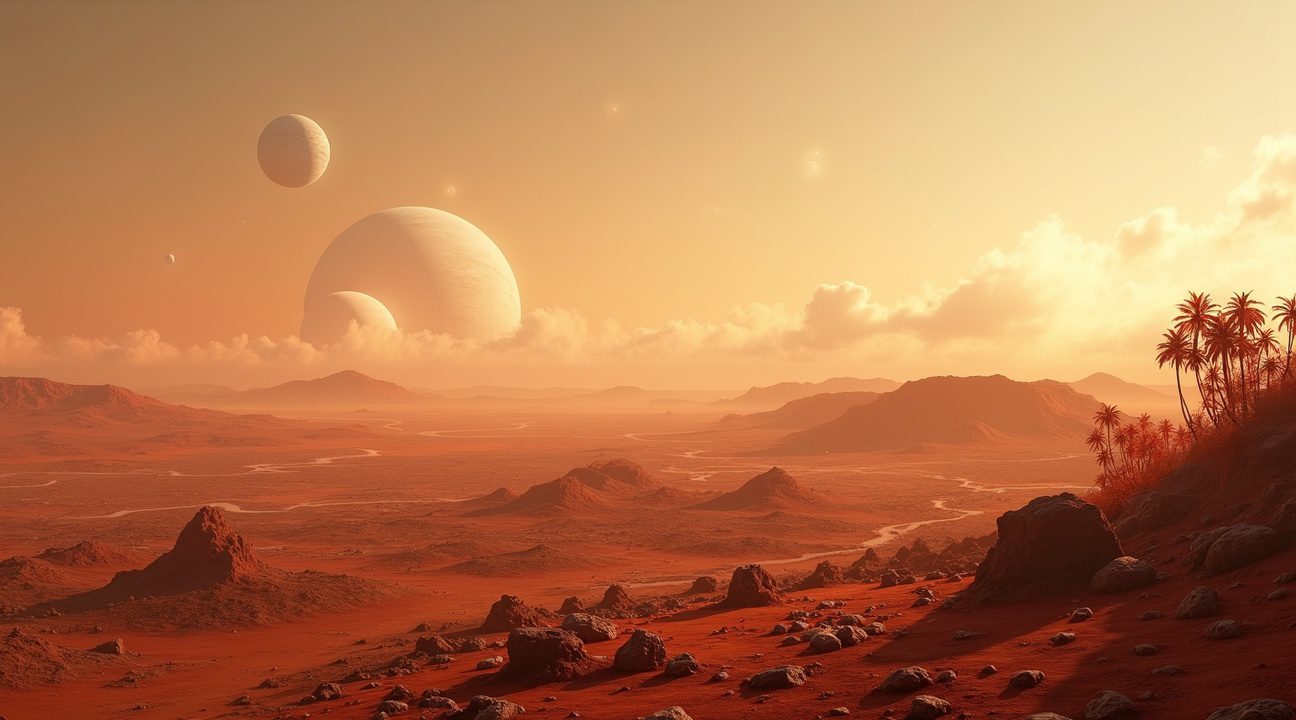
Mars’ Lost Habitability Drives Scientific Motivation
The red planet’s ancient history serves as a powerful catalyst for modern terraforming research. I find it fascinating that rover missions have revealed compelling evidence of Mars’ dramatically different past, when surface water flowed freely across the landscape and a much denser atmosphere enveloped the planet. This discovery transforms our understanding of what Mars could become again.
Scientists recognize that Mars wasn’t always the barren world we observe today. Evidence suggests the planet may have once supported life, making the prospect of colonizing Mars not just science fiction but a restoration project. The stark contrast between Mars’ past and present conditions drives much of the current scientific interest in planetary engineering.
Understanding Mars’ Atmospheric Challenge
The current Martian atmosphere presents a formidable obstacle to habitability. Composed of approximately 95% carbon dioxide, this thin atmosphere creates an environment completely unsuitable for human life. The atmospheric composition lacks the oxygen and pressure necessary to support terrestrial organisms, while offering little protection from harmful solar radiation.
Many researchers view terraforming as an opportunity to reverse planetary decline rather than simply creating something entirely new. This perspective shifts the conversation from imposing human will on an alien world to restoring a planet’s lost potential. The scientific community increasingly frames Mars terraforming as ecological restoration on a planetary scale.
Broader Justifications for Planetary Engineering
Beyond scientific curiosity, terraforming Mars addresses several critical concerns for humanity’s future. Researchers outline multiple compelling reasons for pursuing this ambitious goal:
- Mitigating existential risks by establishing a backup location for human civilization
- Securing access to future resources that could support expanding human populations
- Creating opportunities for large-scale ecological restoration experiments
- Developing technologies that could benefit Earth’s environmental challenges
- Advancing our understanding of planetary systems and climate engineering
Additional innovative concepts continue to emerge from the scientific community. Some researchers explore stabilizing the orbits of Mars’ two moons, Phobos and Deimos, to create more predictable tidal forces. Others investigate generating an artificial magnetic field that would shield the planet from destructive solar wind, protecting both atmosphere and potential surface life.
The concept of deploying artificial trees designed specifically for Martian photosynthesis represents another intriguing approach. These engineered organisms could potentially process the carbon dioxide-rich atmosphere while producing oxygen, mimicking the terraforming effects of Earth’s early plant life but accelerated through human intervention.
Scientists emphasize that understanding Mars’ ancient habitability provides crucial insights into what restoration might achieve. The planet’s geological record reveals a world that once possessed many characteristics necessary for life, suggesting that recreating those conditions isn’t impossible. Space exploration missions continue to uncover details about how Mars lost its atmosphere and magnetic field, information that directly informs terraforming strategies.
The motivation for Mars terraforming extends beyond simple human expansion. I see it as an opportunity to demonstrate humanity’s capacity for positive planetary stewardship. If we can restore a dead world to life, perhaps we can better protect the living world we already inhabit.
Research into Mars’ lost habitability also connects to broader astrobiological investigations. Essential building blocks for life found throughout our solar system suggest that Mars’ past habitability wasn’t unique. This knowledge reinforces the scientific foundation for believing that planetary restoration is achievable with sufficient technology and determination.
The scientific motivation for terraforming Mars ultimately stems from evidence that the planet once thrived. Rather than imposing an alien environment on a hostile world, researchers increasingly view this project as helping Mars reclaim its biological heritage. This perspective transforms terraforming from conquest to restoration, making the scientific and ethical case for planetary engineering more compelling than ever before.
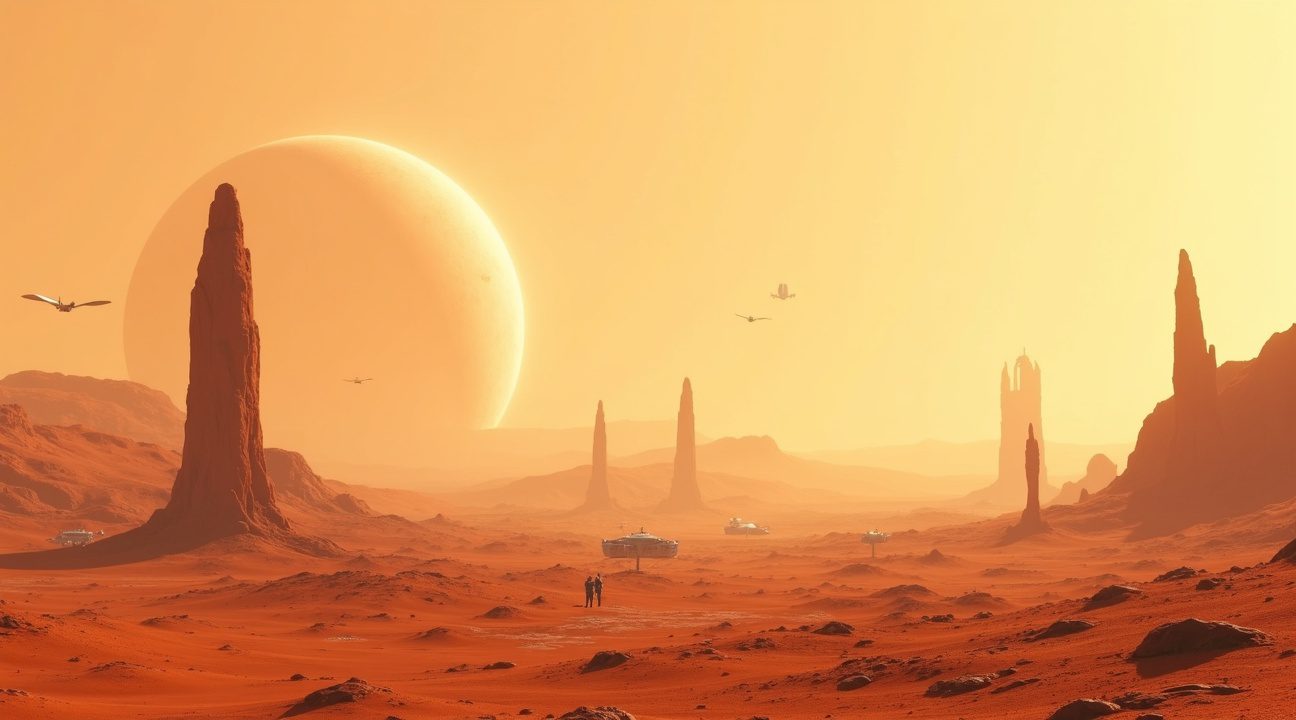
Trillion-Dollar Economics Meet Engineering Reality
Mars presents an extraordinary economic opportunity that could reshape our understanding of real estate valuation and planetary investment. Post-terraforming scenarios suggest Martian real estate markets could value open land at over $36 trillion, with undeveloped plots potentially priced at $10 per acre—totaling $358 billion across the planet’s surface. These astronomical figures reflect the scarcity principle applied to an entire world, where breathable atmosphere and habitable conditions would create unprecedented demand for livable space.
The Promise of Dome-Based Communities
Habitat domes represent the most practical near-term approach to Martian settlement economics. Each dome measuring 100 meters in diameter could shelter up to 20 families and carry an estimated real estate value of $1 million. These structures offer several economic advantages over waiting for full planetary transformation:
- Immediate return on investment through controlled environments
- Scalable development that doesn’t require planetary-scale atmospheric changes
- Reduced technological barriers compared to full terraforming
- Potential for specialized economic zones based on dome functions
The dome model creates manageable investment units that private companies and governments can actually finance, rather than requiring the impossible task of funding entire planetary transformation upfront.
Hard Limits Constraining the Vision
Despite these compelling economic incentives, serious technological barriers prevent complete planetary transformation using current methods. Mars simply doesn’t contain enough accessible CO₂ to trigger and sustain the significant warming required for full terraforming. This fundamental limitation means the trillion-dollar open real estate market remains theoretical under present scientific understanding.
Current atmospheric models show that even if we released all available CO₂ from Martian polar ice caps and soil, the resulting greenhouse effect wouldn’t generate sufficient warming to create Earth-like conditions. The planet’s low gravity also presents challenges for maintaining any thickened atmosphere over geological timescales, as atmospheric particles would gradually escape to space.
However, partial terraforming through localized approaches offers more realistic economic opportunities. Algal zones could create oxygen-rich pockets around settlements, while protective domes could house industrial and residential communities. These targeted efforts represent achievable goals that still require massive capital investment and long-term infrastructure commitments.
I see the most promising economic model emerging from hybrid approaches that combine dome habitats with limited atmospheric modification in specific regions. Elon Musk’s game plan already demonstrates how private investment can accelerate Mars-related technologies, though full terraforming remains beyond current capabilities.
The financial requirements for even partial terraforming projects demand international cooperation and sustained funding over decades. Early settlers would need to establish profitable industries—mining, manufacturing, research—to justify continued investment before any real estate appreciation occurs. SpaceX’s achievements in reducing launch costs provide essential infrastructure for these economic models to function.
Mars also offers unique investment opportunities through resource extraction that could fund terraforming efforts. The planet contains valuable minerals and potentially accessible water ice that could generate revenue streams independent of real estate development. These resources create economic incentives for initial settlement even before any atmospheric modification begins.
The timeline for realizing these economic potentials stretches far beyond typical investment horizons. Dome-based communities might generate returns within 20-30 years, while any significant atmospheric changes would require centuries of sustained effort. This reality demands new financial models that can support multi-generational projects with uncertain outcomes.
Recent discoveries about life-building blocks on Saturn’s moon remind us that Mars isn’t the only destination for human expansion, potentially affecting long-term economic calculations about Martian investment priorities.
Current technological limitations don’t eliminate Mars’s economic potential—they simply redirect it from planetary-scale transformation to more achievable localized development. Smart investors and engineers will focus on dome habitats and regional terraforming projects that can deliver returns while building toward more ambitious goals.
Major Obstacles Still Block Human Settlement
Mars presents formidable challenges that currently prevent sustained human colonization, despite growing enthusiasm for Mars colonization plans. The Red Planet’s gravitational environment creates immediate health concerns for long-term residents, as Mars possesses only 38% of Earth’s gravitational pull. Extended exposure to this reduced gravity could lead to bone density loss, muscle atrophy, and cardiovascular complications that would severely impact human health over time.
Environmental Hazards and Atmospheric Challenges
The planet’s regolith toxicity poses another significant threat to human survival. Martian soil contains high concentrations of perchlorates—chemical compounds that can damage the thyroid gland and disrupt hormone production in humans. These toxic substances permeate the surface material, making direct contact dangerous and complicating agricultural efforts essential for food production.
Mars lacks a natural magnetic field, which creates cascading problems for potential settlers. Without this protective barrier, the planet remains exposed to unfiltered solar wind—streams of charged particles from the Sun that strip away atmospheric particles. This magnetic field absence fundamentally undermines any attempts to build and maintain a stable atmosphere suitable for human life.
The atmospheric retention challenges extend far beyond current technological capabilities. Mars would require vast quantities of oxygen and nitrogen to create a breathable atmosphere at sufficient pressure for human survival. Maintaining these gases presents an ongoing battle against the solar wind, which continuously erodes atmospheric particles into space.
Technological Limitations and Timeline Realities
Current technology falls dramatically short of addressing these planetary-scale engineering challenges. Creating a dense, stable atmosphere would likely require centuries of sustained effort, even with significant technological advances. The process involves not just introducing gases but developing systems to continuously replenish what the solar wind strips away.
Scientists recognize that full-scale terraforming remains beyond present capabilities, despite recent advances in space exploration technology. The energy requirements alone for atmospheric engineering would dwarf any current human industrial capacity. Additionally, the infrastructure needed to support such massive undertakings would require unprecedented international cooperation and resource allocation.
The gravitational challenges extend beyond individual health concerns to affect entire settlement operations. Construction techniques, transportation systems, and even basic human movements would need complete redesign to function effectively in Mars’ reduced gravity environment. Equipment designed for Earth conditions would perform unpredictably, potentially creating safety hazards for colonists.
Solar wind exposure affects more than just atmospheric retention—it threatens electronic systems, communication equipment, and human DNA integrity. Without adequate shielding, radiation levels on Mars could cause cancer, genetic damage, and shortened lifespans for inhabitants. Developing effective radiation protection systems adds another layer of complexity to settlement planning.
The regolith toxicity problem extends beyond direct human contact to contaminate water sources and affect plant growth. Any agricultural systems would need extensive filtration and soil treatment processes, significantly increasing the complexity and cost of food production. Even with advances in understanding essential building blocks for life, applying this knowledge to Mars’ hostile environment remains problematic.
These obstacles collectively demonstrate why Mars settlement requires revolutionary advances in multiple scientific fields:
- Atmospheric engineering
- Radiation shielding
- Gravity adaptation
- Soil remediation
Each of these represents a major research frontier that could take decades to resolve. The interconnected nature of these challenges means progress in one area doesn’t necessarily accelerate solutions in others, extending the timeline for practical human settlement well into the future.
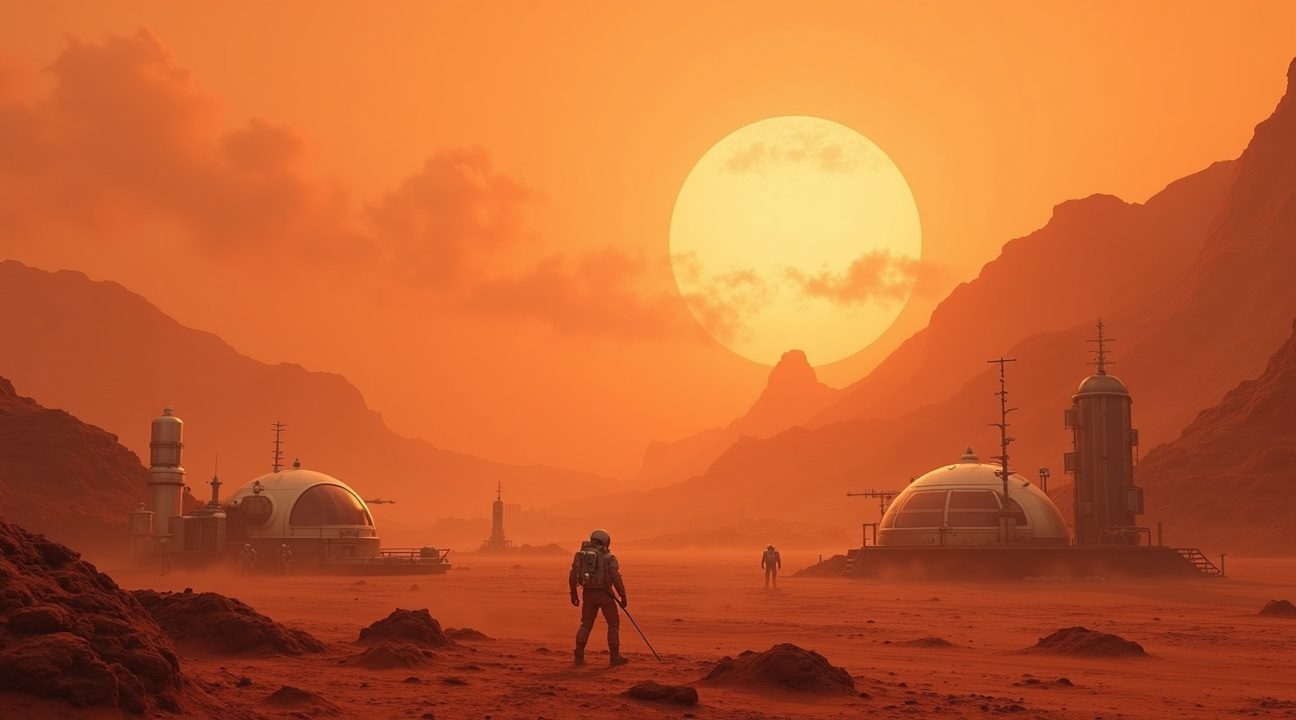
Ethical Debate: Planetary Stewardship vs Human Survival
I see terraforming Mars as one of humanity’s most polarizing scientific endeavors, sparking intense ethical debates about our responsibilities as planetary stewards. Proponents present compelling arguments about addressing Earth’s growing overpopulation crisis, countering accelerating resource depletion, and ensuring humanity’s long-term survival. They argue that Mars represents a second chance — not just for our species, but for the planet itself, potentially rehabilitating what scientists believe was once a livable world.
The survival argument carries particular weight among researchers who view Mars colonization as an insurance policy against existential threats. Mars colonization initiatives often emphasize how natural disasters, climate change, or cosmic events could threaten human civilization on Earth. Terraforming advocates suggest that transforming Mars could provide breathing room for Earth’s stressed ecosystems while giving humanity a backup plan.
Balancing Protection with Progress
Critics raise equally valid concerns about the enormous energy and material expenditures required for planetary transformation. I’ve observed growing opposition from scientists who question whether diverting such massive resources from Earth’s environmental problems makes ethical sense. They argue that the same effort could address climate change, biodiversity loss, and pollution on our home planet.
The potential destruction of hypothetical native Martian life presents another significant ethical hurdle. Even microscopic organisms discovered beneath Mars’s surface could represent irreplaceable evolutionary pathways that terraforming might eliminate. Environmental ethicists emphasize our ongoing duty to preserve not only Earth’s biosphere but also the pristine environments of other worlds.
Astraethical guidelines now attempt to balance planetary protection protocols with environmental restoration goals. These emerging frameworks suggest that any terraforming effort must first conduct exhaustive searches for existing life forms and establish protected zones before proceeding with atmospheric modification. Some proposals advocate for partial terraforming that creates habitable zones while preserving Mars’s natural state in designated areas.
Space exploration advances continue to inform this ethical discussion by providing better data about Mars’s current conditions and past habitability. Each mission reveals new complexities about what planetary stewardship truly means when applied to worlds beyond Earth.
The overpopulation mitigation argument faces scrutiny from those who believe technological solutions and sustainable development on Earth offer more ethical alternatives. Critics contend that terraforming Mars might encourage continued environmental degradation on Earth by suggesting escape remains possible.
I notice the ethical debate often centers on competing definitions of responsibility. Some view terraforming as humanity’s duty to restore a dead world, while others see it as an irresponsible manipulation of natural systems. The discovery of life’s building blocks throughout the solar system adds complexity by suggesting life might be more common than previously thought.
Planetary protection advocates argue that strict containment protocols could allow limited terraforming experiments without compromising potential Martian ecosystems. They propose creating enclosed habitable zones using atmospheric processors and greenhouse effects while maintaining the planet’s overall natural state.
The environmental restoration perspective frames terraforming as ecological rehabilitation rather than planetary conquest. This approach views Mars as a patient requiring careful treatment to restore its former habitability, much like rewilding projects on Earth. Supporters argue that bringing life back to Mars honors the planet’s geological history while serving human needs.
Resource allocation remains central to the ethical discussion. The enormous costs associated with planetary transformation could instead fund:
- Renewable energy development
- Conservation efforts
- Sustainable agriculture on Earth
Critics question whether humanity has the moral right to terraform another world while failing to properly steward its own.
These ethical considerations will likely shape terraforming policies for decades to come, requiring careful balance between human survival instincts and environmental responsibility. The debate ultimately reflects deeper questions about humanity’s role in the cosmos and our obligations to preserve the natural order while ensuring our species’ future.
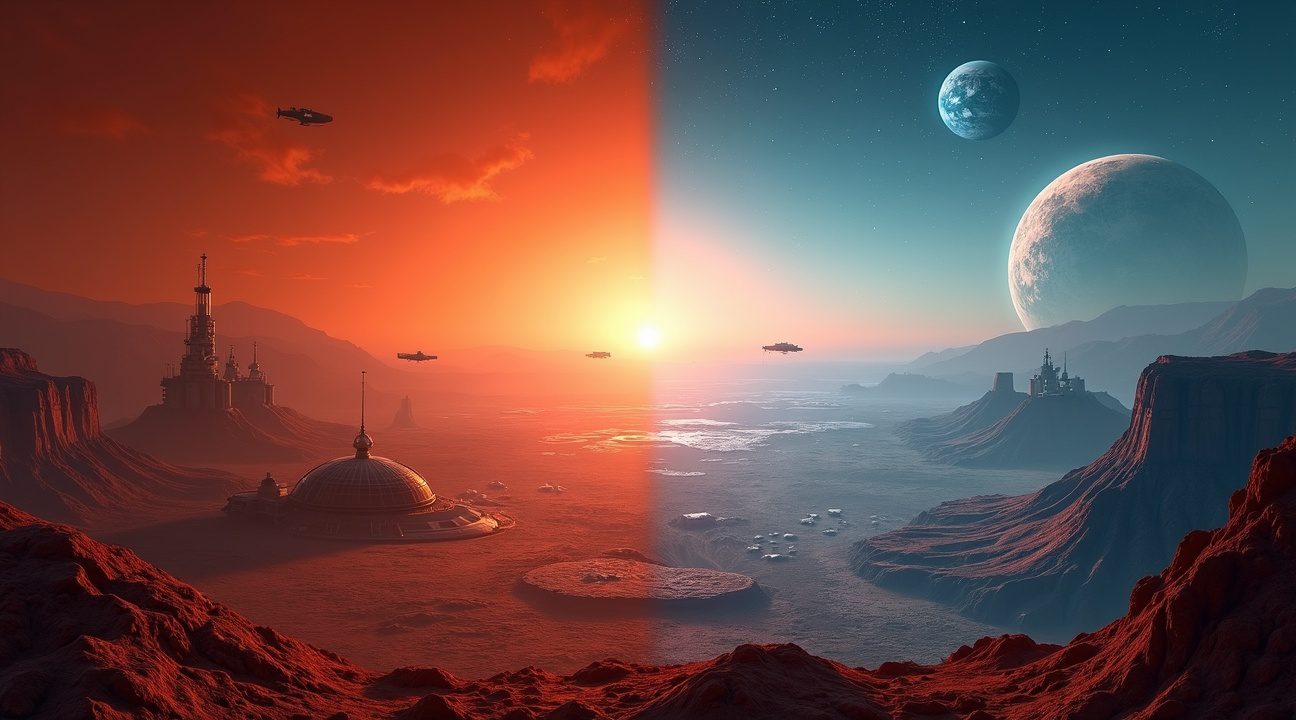
Sources:
ZME Science – Terraforming Mars might actually work—and scientists now have a plan to try it
Space.com – Turning the Red Planet Green: Terraforming Mars Seriously
Wikipedia – Terraforming of Mars
University of Chicago News – Scientists lay out revolutionary method to warm Mars
Andart by Aleph.se – Mars Economics
Consensus – Feasibility of Terraforming Mars for Human Habitation: Various

